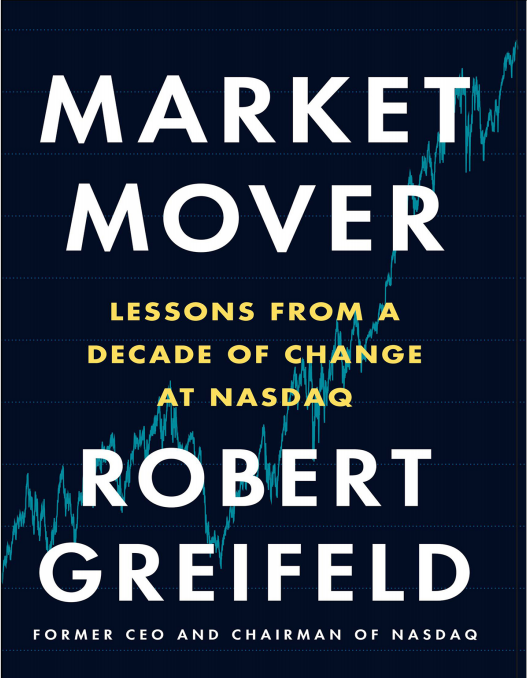Market Mover Lessons from a Decade of Change at Nasdaq By Robert Greifeld

Chapter One
Nasdaq Comes Calling
Nasdaq Names Greifeld CEO
Wall Street Journal, April 16, 2003
I’m six months too late.
That’s the phrase that kept popping into my head as I
started my job as CEO at Nasdaq in May 2003. I’d been
hired to engineer a turnaround at this storied financial
institution, which was struggling through perhaps the most
precarious period of its three-decade history. It was not a
position I’d sought out; I’d initially been hesitant to even
take the interview. I knew enough about Nasdaq and its
problems to question whether it was really where I wanted
to be. But I’m not one to turn away from a challenge. When
I got inside, however, I began to wonder if the window of
opportunity had already closed.
Earlier that year, I had been happily employed at
SunGard Data Systems, a large software and services
provider for the financial industry. Prior to that, I’d been a
software entrepreneur, co-owner of ASC, which had been
sold to SunGard—the second largest acquisition they had
ever done. I was promoted quickly, becoming an Executive
Vice President responsible for a collection of subsidiaries
with annual revenue of more than $1 billion and thousands
of employees. It was a fast-moving, stimulating field, and I
loved my job. Building new technologies is a deeply
creative and satisfying activity. In my heart, I have always
loved software—it seems like you have the freedom to
create anything. So when the recruiter first called me and
told me Nasdaq was seeking a new CEO, I was flattered but
hesitant. Did I really want to leave all of this behind for a
highly regulated organization that I knew had some serious
issues, even one as prestigious as Nasdaq?
“Oh, I don’t know, that’s not really my thing. I’m a
technology guy, not an exchange guy,” I told him. “Plus,
Nasdaq has so many problems.”
That was an understatement. In 2003, Nasdaq was
reeling. The dot-com bust had dried up the IPO (initial
public offering) market. The tech stars that had lit up the
financial firmament only a few years before had lost their
luster—and their lofty valuations. The organization was
bogged down in transitioning from regulated nonprofit
entity to for-profit company. Nasdaq was losing money. The
ever-increasing trading volume (and the revenue that goes
with it) that had made the platform a favorite of traders
during the market expansion of the 1990s was a thing of
the past.
Nasdaq’s predicament was a classic tale of the disruptor
becoming the disrupted. The three-decades-old exchange
had once been a technological leap forward: the world’s
first virtual stock market. Traditionally, exchanges used the
“trading floor” model. You’ve seen it in the movies—traders
negotiating, yelling, and gesticulating in the financial
world’s equivalent of the mosh pit. There were other
venues for trading stocks of small companies, like the
telephone-based over-the-counter (OTC) market, but these
were insignificant and lightly regulated. Nasdaq*
was
founded in 1971 to bring order and fairness to the OTC
market. It was a kind of virtual floor, a centralized system
for showing prices. Dealers and traders across the country
Market Mover Lessons from a Decade of Change at Nasdaq By Robert Greifeld




